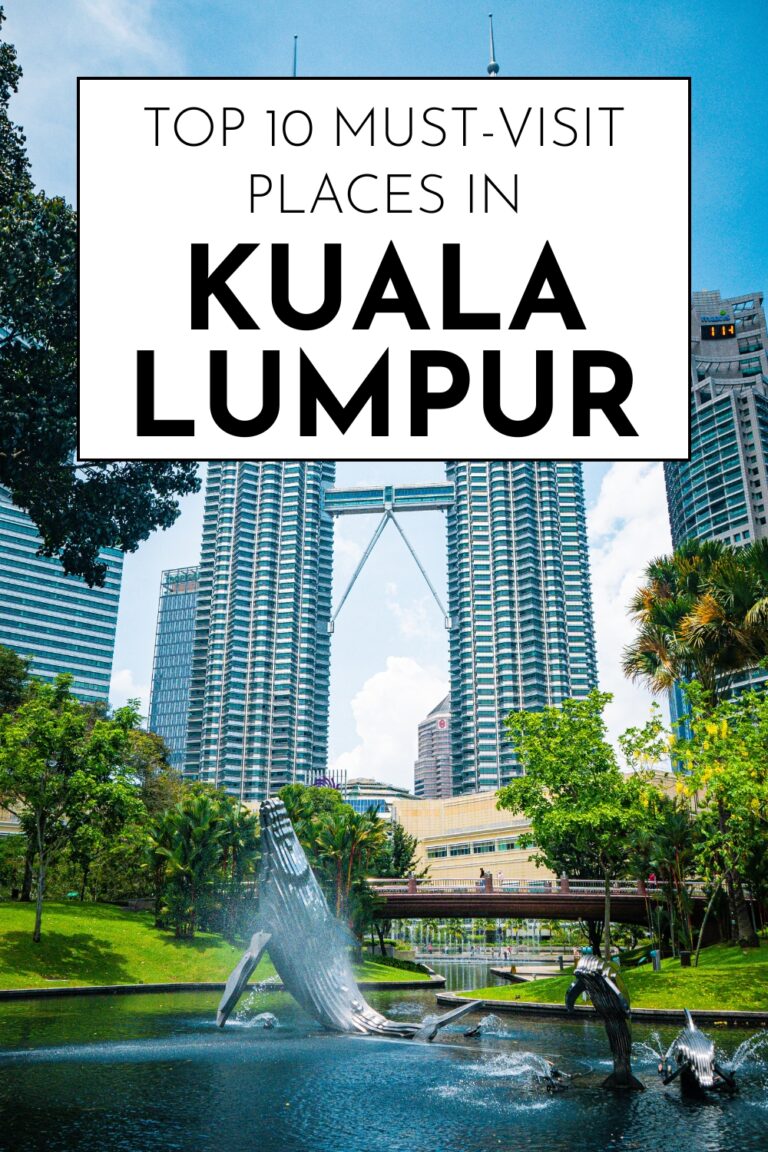Malaysia’s dynamic capital city, Kuala Lumpur, stands as a fascinating blend of modern architecture and rich cultural heritage. This bustling metropolis of 1.8 million people serves as the country’s economic and cultural heart, where gleaming skyscrapers rise alongside traditional temples, and street food vendors operate in the shadows of luxury shopping malls.
Founded in 1857 as a tin mining settlement, Kuala Lumpur has transformed into one of Southeast Asia’s most vibrant cities. The name literally means “muddy confluence” in Malay, referring to the meeting point of the Klang and Gombak rivers. Today, this muddy confluence has evolved into a sparkling urban center that welcomes millions of visitors each year.
What makes Kuala Lumpur truly special is its incredible diversity. The city is home to Malays, Chinese, Indians, and numerous other ethnic groups, creating a cultural tapestry that’s reflected in everything from architecture to cuisine. You can start your day exploring Islamic art, enjoy Chinese dim sum for lunch, visit a Hindu temple in the afternoon, and end with Indian curry for dinner – all within a few kilometers of each other.
The city’s contrasts are equally compelling. Ultra-modern shopping centers sit next to century-old markets, while traditional shophouses share streets with contemporary office towers. This unique blend creates an urban experience that’s both familiar and exotic, offering something for every type of traveler.
Kuala Lumpur’s strategic location and excellent infrastructure make it an ideal base for exploring Malaysia and the broader Southeast Asian region. The city’s efficient public transportation system, world-class airports, and range of accommodation options cater to every budget and preference.
Let’s explore the ten most spectacular places that showcase why Kuala Lumpur has become one of Asia’s must-visit destinations.
1. Petronas Twin Towers – Iconic Architectural Marvel

The Petronas Twin Towers dominate Kuala Lumpur’s skyline and serve as the city’s most recognizable landmark. These 452-meter tall structures held the title of world’s tallest buildings from 1998 to 2004 and remain the tallest twin towers globally.
Architectural Excellence and Design
The towers’ design brilliantly incorporates Islamic geometric patterns with modern engineering. Each tower features eight-pointed stars that create a 16-sided structure, reflecting Malaysia’s Islamic heritage while showcasing contemporary architectural innovation.
Cesar Pelli’s architectural masterpiece uses a steel and glass facade that changes appearance throughout the day. The towers seem to shimmer during daylight hours and transform into glowing beacons after sunset, creating different photographic opportunities from morning to night.
Skybridge and Observation Deck Experience
The famous Skybridge on the 41st and 42nd floors connects the two towers and offers visitors a unique perspective of the city below. This double-decker bridge provides both structural support and an unforgettable viewing experience.
The observation deck on the 86th floor delivers panoramic views across Kuala Lumpur’s urban landscape. Visitors can see the city’s mix of modern developments and traditional neighborhoods stretching toward the surrounding hills.
Best time to visit: Late afternoon for day and night views
Duration: 1-2 hours
Ticket booking: Advance online reservation required
Height: 452 meters (1,483 feet)
2. Batu Caves – Hindu Temple Complex

Located just 13 kilometers north of Kuala Lumpur, Batu Caves represents one of Malaysia’s most significant Hindu religious sites. This limestone hill contains a series of caves and temples that attract both pilgrims and tourists from around the world.
Religious Significance and Spiritual Atmosphere
The site is dedicated to Lord Murugan, and the massive 42.7-meter golden statue at the entrance serves as a powerful symbol of Hindu devotion. The caves have been used as places of worship for over 120 years, creating an atmosphere of deep spiritual significance.
During the annual Thaipusam festival, hundreds of thousands of devotees climb the 272 steps while carrying kavadi (elaborate offerings) in acts of devotion and penance. This spectacular festival transforms the caves into one of the world’s most dramatic religious celebrations.
Cave Exploration and Natural Beauty
The main Temple Cave requires climbing 272 colorful steps, but the reward is worth the effort. Inside, the cathedral-like limestone cavern soars 100 meters high, creating a natural temple that’s both beautiful and spiritually moving.
The Dark Cave offers guided tours that showcase the cavern’s unique ecosystem, including rare species of animals that have adapted to cave life. The Art Gallery Cave displays numerous Hindu statues and paintings that tell stories from Hindu mythology.
Distance from KL: 13 kilometers
Steps to climb: 272
Entry fee: Free (donations welcome)
Best time: Early morning to avoid crowds and heat
3. Central Market – Cultural Shopping Experience
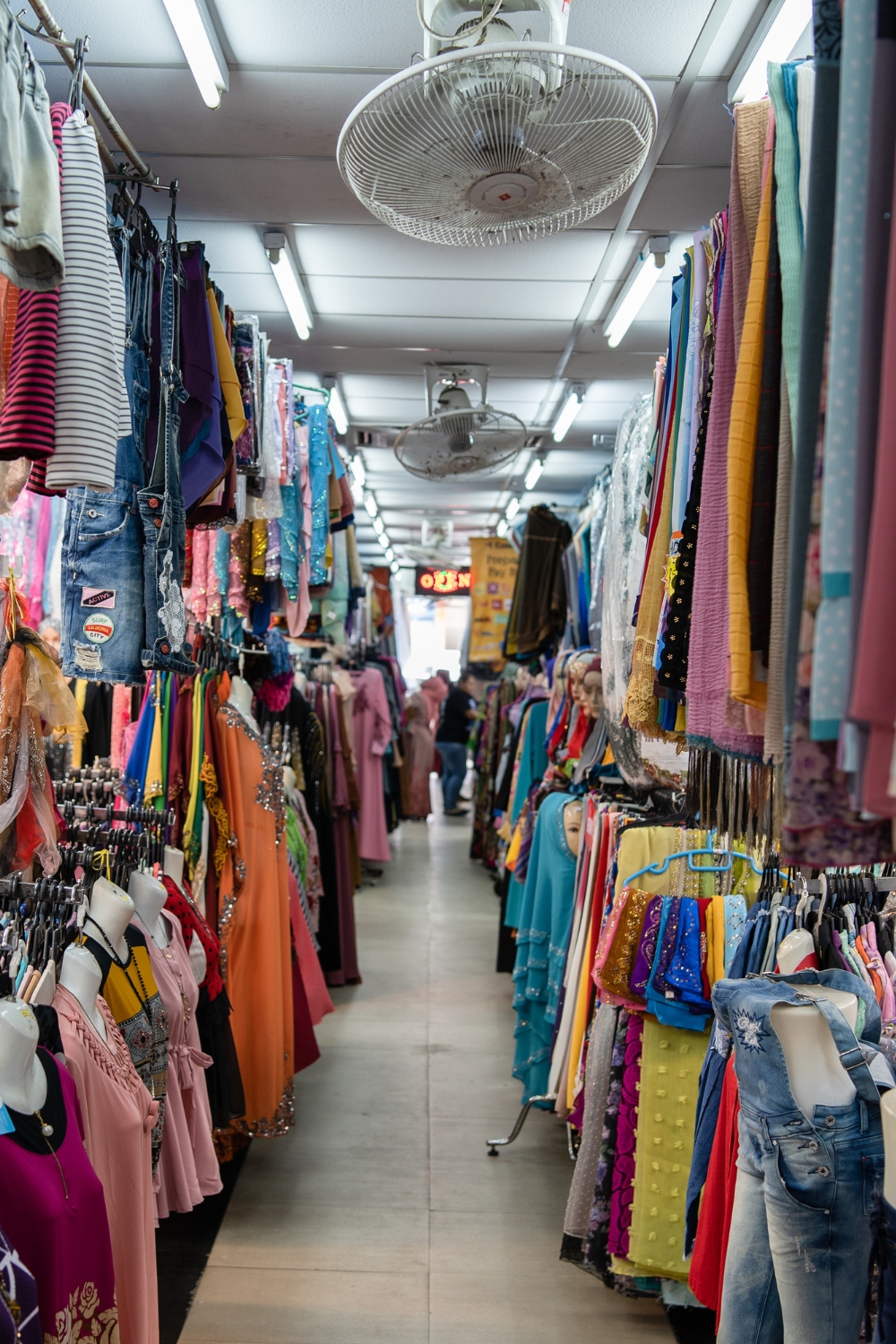
Central Market, housed in a beautiful 1928 Art Deco building, serves as Kuala Lumpur’s cultural heart and premier destination for Malaysian handicrafts, art, and souvenirs. This historic market offers an authentic shopping experience away from modern malls.
Traditional Crafts and Local Artisans
The market showcases Malaysia’s rich craft traditions through sections dedicated to different cultural communities. The Malay section features traditional textiles, woodcarvings, and batik art, while the Chinese section offers calligraphy, paintings, and decorative items.
Indian crafts include intricate jewelry, brass items, and colorful textiles. The market also features contemporary Malaysian art, making it an excellent place to discover both traditional and modern creative expressions.
Cultural Performances and Dining
Regular cultural performances take place in the market’s central area, featuring traditional dances, music, and sometimes craft demonstrations. These performances provide insight into Malaysia’s diverse cultural heritage.
The market’s food court offers authentic Malaysian cuisine in a historic setting. From Hainanese chicken rice to Indian curry, the food court provides an excellent introduction to local flavors at affordable prices.
Operating hours: Daily 10 AM – 10 PM
Best for: Souvenirs, cultural experiences, local food
Architecture: 1928 Art Deco building
Atmosphere: Traditional, cultural, family-friendly
4. KL Tower (Menara Kuala Lumpur) – 360-Degree City Views

Standing 421 meters tall, KL Tower offers the best panoramic views of Kuala Lumpur and serves as the city’s telecommunications hub. The tower’s observation decks provide stunning 360-degree perspectives of the urban landscape and surrounding hills.
Observation Decks and Viewing Experience
The main observation deck at 276 meters offers indoor viewing with air conditioning and informative displays about the city’s landmarks. The open-air Sky Deck provides an outdoor viewing experience that’s perfect for photography and feeling the city’s energy.
Both decks offer different perspectives on the Petronas Twin Towers, making KL Tower the best location for photographing the city’s most famous landmark. The towers appear particularly stunning during sunset and after dark when they’re illuminated.
Tower Activities and Attractions
The tower features a revolving restaurant that completes a full rotation every hour, allowing diners to enjoy city views from every angle while savoring international cuisine. The experience combines excellent food with unparalleled scenery.
The Sky Box experience offers a glass box that extends from the tower, providing a thrilling experience for visitors who want to feel like they’re floating above the city. The tower also hosts regular cultural performances and exhibitions.
Height: 421 meters
Observation deck: 276 meters
Operating hours: Daily 9 AM – 10 PM
Best time: Sunset for day-to-night transition
5. Chinatown (Petaling Street) – Vibrant Street Markets
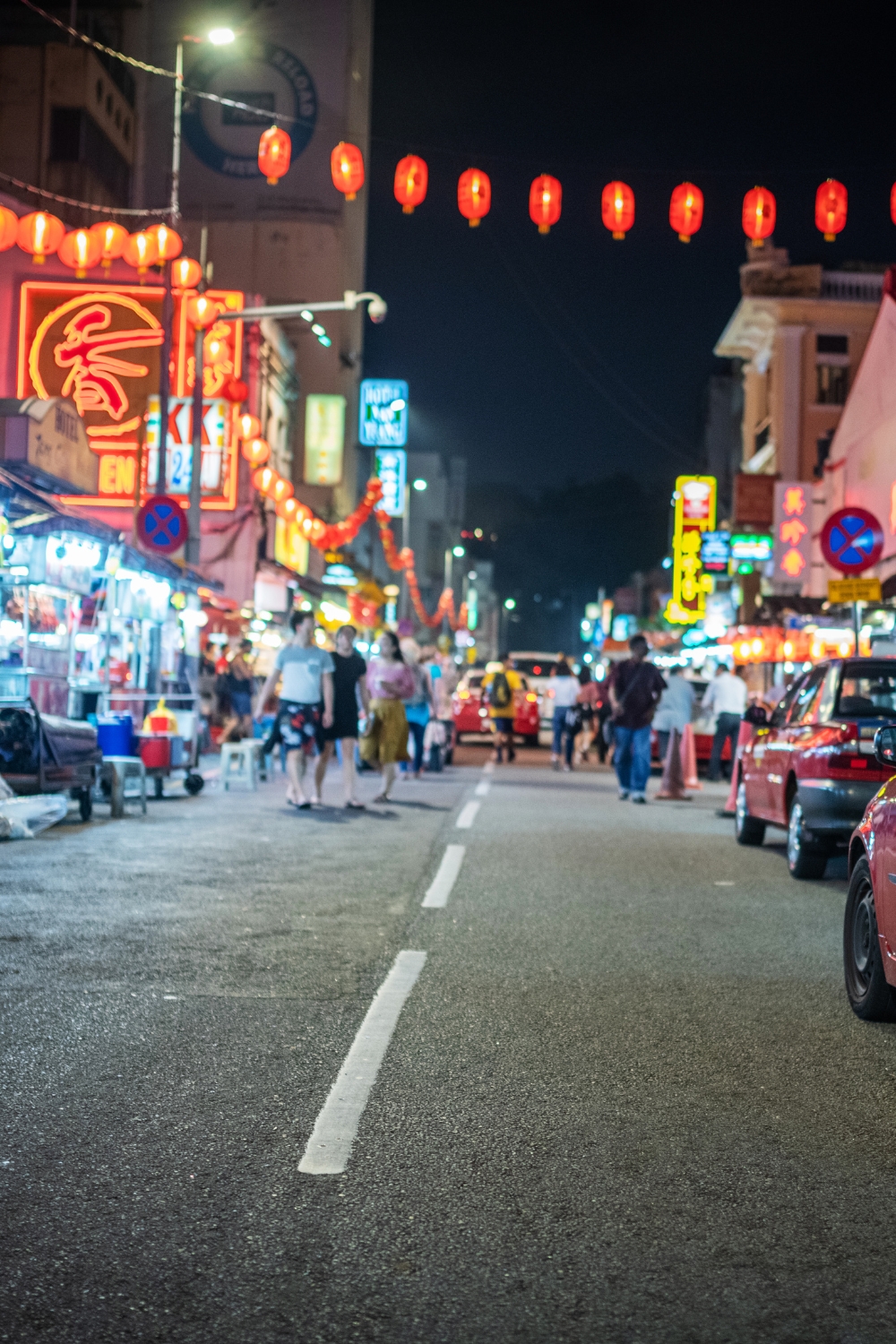
Kuala Lumpur’s Chinatown, centered around Petaling Street, pulses with energy, color, and the sounds of bustling commerce. This historic district offers an authentic glimpse into the city’s Chinese heritage while serving as a shopping and dining destination.
Street Market Atmosphere and Shopping
Petaling Street transforms into a covered night market each evening, with vendors selling everything from replica goods to souvenirs, clothing, and electronics. The haggling culture here is part of the experience, and visitors are expected to negotiate prices.
The market’s narrow alleys and crowded stalls create an authentic Asian market atmosphere that’s both exciting and overwhelming. Street food vendors operate alongside merchandise stalls, filling the air with enticing aromas and creating a feast for all senses.
Cultural Heritage and Historic Sites
The area surrounding Petaling Street contains numerous historic buildings, temples, and traditional shophouses that showcase Chinese architectural styles. The Sri Mahamariamman Temple, Kuala Lumpur’s oldest Hindu temple, sits at the edge of Chinatown.
The area also features the beautiful Guan Di Temple and the historic Central Market nearby. Walking through these streets provides insight into how different cultural communities have coexisted and influenced each other over generations.
Best time to visit: Evening for night market experience
Activities: Shopping, dining, cultural exploration
Atmosphere: Bustling, authentic, cultural
Specialties: Street food, bargain shopping, cultural sites
6. Islamic Arts Museum Malaysia – Cultural Heritage
The Islamic Arts Museum Malaysia houses one of Southeast Asia’s finest collections of Islamic art and artifacts. This world-class museum offers visitors a comprehensive journey through Islamic civilization and its artistic achievements.
Extensive Collections and Exhibitions
The museum’s collection spans 1,400 years of Islamic art, from the earliest periods to contemporary works. Galleries are organized by region and theme, allowing visitors to trace the development of Islamic art across different cultures and time periods.
Highlights include rare manuscripts, textiles, ceramics, jewelry, and architectural models. The museum’s collection of Islamic calligraphy is particularly impressive, showcasing this art form’s evolution across different regions and historical periods.
Architecture and Special Features
The museum building itself represents contemporary Islamic architecture with its blue dome and geometric patterns. The structure creates an appropriate setting for the collections while serving as an example of modern Islamic design principles.
The museum includes a reconstruction of a traditional Islamic house, complete with furnishings and decorations that show how artistic elements were integrated into daily life. The library contains over 1,000 books on Islamic art and culture.
Collection span: 1,400 years of Islamic art
Highlights: Manuscripts, textiles, calligraphy, architectural models
Architecture: Contemporary Islamic design
Research facilities: Specialized library and archives
7. Merdeka Square – Historical Significance
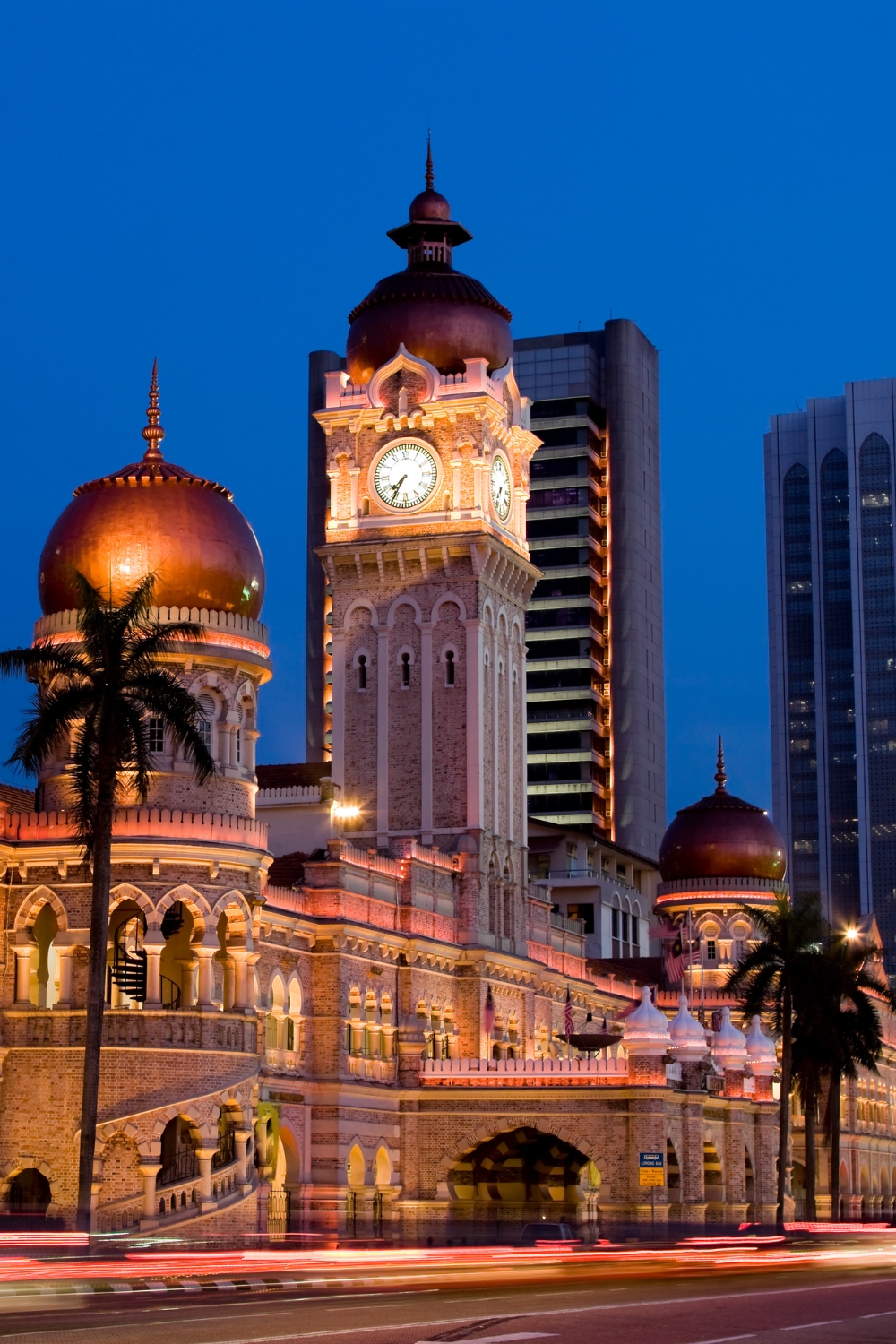
Merdeka Square holds profound historical significance as the site where Malaysia declared independence from British colonial rule on August 31, 1957. This expansive square serves as the symbolic heart of Malaysian nationhood and hosts important national celebrations.
Historical Importance and National Identity
The square’s name means “Independence Square” in Malay, and it remains the focal point for Malaysia’s National Day celebrations each year. The 95-meter flagpole, one of the world’s tallest, flies the Malaysian flag and serves as a powerful symbol of national sovereignty.
The square is surrounded by important colonial-era buildings that now house government offices and cultural institutions. These structures tell the story of Malaysia’s journey from colonial territory to independent nation.
Colonial Architecture and Surrounding Landmarks
The Sultan Abdul Samad Building, with its distinctive clock tower and Islamic architectural elements, dominates one side of the square. This building originally served as the colonial government’s administrative center and now houses the Ministry of Information.
The Royal Selangor Club, St. Mary’s Cathedral, and the National History Museum surround the square, creating a collection of architectural styles that reflect different periods of Malaysian history. The Kuala Lumpur City Gallery nearby provides additional context about the city’s development.
Historical significance: Malaysia’s independence declaration site
Key features: 95-meter flagpole, colonial architecture
Surrounding landmarks: Sultan Abdul Samad Building, Royal Selangor Club
Best for: History enthusiasts, architecture lovers
8. Bukit Bintang – Shopping and Entertainment Hub

Bukit Bintang district represents Kuala Lumpur’s shopping and entertainment heart, where major malls, restaurants, bars, and hotels create a vibrant urban playground. This area never sleeps, offering activities from early morning until late night.
Shopping Paradise and Retail Therapy
The district contains some of Asia’s largest shopping malls, including Pavilion KL, Lot 10, and Sungei Wang Plaza. These malls offer everything from luxury international brands to local designers, electronics, and unique Malaysian products.
Street-level shopping along Jalan Bukit Bintang provides a different experience with smaller boutiques, local brands, and more affordable options. The area’s pedestrian-friendly design makes it easy to explore multiple shopping venues in a single visit.
Dining and Nightlife Scene
Bukit Bintang offers incredible dining diversity, from high-end restaurants in luxury hotels to street food courts and local coffee shops. The area’s food scene reflects Malaysia’s multicultural heritage with options for every taste and budget.
The nightlife scene includes rooftop bars with city views, live music venues, nightclubs, and casual pubs. The area attracts both locals and tourists, creating a lively atmosphere that extends well into the night.
Best for: Shopping, dining, nightlife, entertainment
Major malls: Pavilion KL, Lot 10, Sungei Wang Plaza
Atmosphere: Vibrant, cosmopolitan, 24/7 activity
Transportation: Excellent public transport connections
9. Thean Hou Temple – Chinese Buddhism

The Thean Hou Temple stands as one of Southeast Asia’s largest Chinese temples, offering spectacular views over Kuala Lumpur while serving as an active place of worship. This modern temple complex showcases Chinese architectural artistry and Buddhist traditions.
Architectural Beauty and Design Elements
The temple’s design incorporates traditional Chinese architectural elements with modern construction techniques. The main structure features upturned eaves, intricate carvings, and colorful decorations that create a visual feast for visitors.
The temple is dedicated to Thean Hou, the Heavenly Mother, and includes altars to various Buddhist and Taoist deities. The complex includes multiple halls, each with different religious functions and artistic decorations.
Panoramic Views and Cultural Activities
The temple’s hilltop location provides excellent views across Kuala Lumpur’s skyline, making it a popular spot for photography and peaceful contemplation. The views are particularly stunning during sunset and after dark when the city lights create a sparkling landscape.
The temple hosts regular cultural events, including traditional performances, festivals, and religious ceremonies. The Chinese New Year celebrations are particularly spectacular, with elaborate decorations and cultural activities.
Dedicated to: Thean Hou (Heavenly Mother)
Architecture: Traditional Chinese with modern elements
Views: Panoramic city skyline
Best time: Sunset, Chinese New Year celebrations
10. Lake Gardens (Perdana Botanical Gardens) – Green Oasis
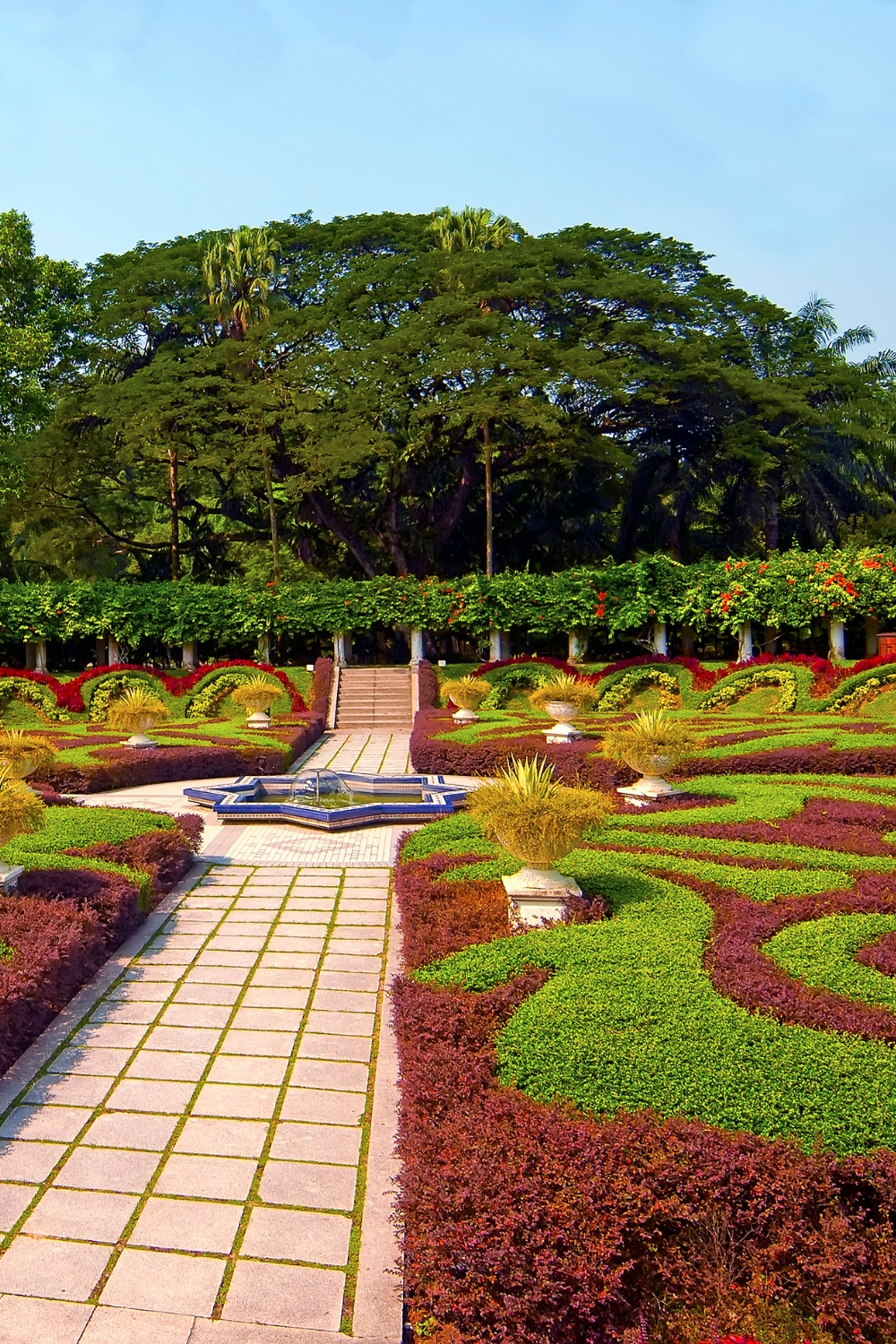
The Lake Gardens, officially known as Perdana Botanical Gardens, provide a peaceful green escape in the heart of Kuala Lumpur. This 91.6-hectare park offers nature lovers a chance to enjoy gardens, lakes, and recreational facilities away from urban hustle.
Botanical Collections and Nature Trails
The gardens feature diverse plant collections, including tropical flowers, medicinal plants, and rare species native to Malaysia. Walking trails wind through different themed sections, allowing visitors to explore various ecosystems and garden designs.
The Orchid Garden showcases Malaysia’s national flower and hundreds of other orchid species in a controlled environment. The Hibiscus Garden features Malaysia’s national flower in various colors and hybrid varieties.
Recreational Activities and Family Fun
The park includes a large lake where visitors can rent paddle boats and enjoy peaceful water activities. The surrounding lawns provide perfect spots for picnics, exercise, and family gatherings.
The park also contains the National Monument, Bird Park, Butterfly Park, and National Planetarium, making it possible to spend an entire day exploring different attractions within the same area.
Size: 91.6 hectares
Featured gardens: Orchid Garden, Hibiscus Garden
Activities: Boating, picnicking, nature walks
Nearby attractions: Bird Park, Butterfly Park, National Monument
Planning Your Kuala Lumpur Adventure
Getting Around the City
Kuala Lumpur’s public transportation system includes the LRT (Light Rail Transit), MRT (Mass Rapid Transit), monorail, and buses that connect all major attractions efficiently. The MyRapid card provides convenient access to all public transport modes.
Taxis and ride-sharing services like Grab offer convenient point-to-point transportation, while the city center remains walkable for many attractions. The GOKL free bus service connects major shopping and tourist areas within the city center.
Best Time to Visit
Dry Season (May-July, December-February): Less rainfall makes outdoor activities more comfortable, though temperatures remain consistently warm and humid year-round.
Year-round Considerations: Kuala Lumpur’s tropical climate means warm temperatures and high humidity throughout the year. Brief afternoon thunderstorms are common but usually pass quickly.
Festival Times: Chinese New Year, Hari Raya, and Deepavali create special cultural atmospheres but may affect opening hours and crowd levels at various attractions.
Cultural Considerations and Local Etiquette
Malaysia is a Muslim-majority country with significant Buddhist, Hindu, and Christian populations. Dress modestly when visiting religious sites, remove shoes before entering temples and mosques, and respect local customs and traditions.
The city’s multicultural nature means you’ll encounter different cultural practices and languages. Learning basic Malay phrases shows respect, though English is widely spoken in tourist areas and business districts.
Conclusion
Kuala Lumpur successfully balances its role as a modern Asian metropolis with deep respect for its cultural heritage and traditions. From the soaring heights of the Petronas Twin Towers to the spiritual depths of ancient temples, from bustling street markets to serene botanical gardens, the city offers experiences that satisfy every type of traveler.
What makes Kuala Lumpur exceptional is its accessibility and diversity. Unlike many major cities, KL manages to offer world-class attractions, excellent cuisine, and cultural experiences at prices that remain affordable for most travelers. The city’s compact size and efficient transportation make it possible to experience multiple attractions in a single day.
These ten must-visit places represent just the beginning of what Kuala Lumpur offers. Each destination provides a different perspective on Malaysian culture, history, and modern development. The city’s greatest strength lies in its ability to surprise visitors with unexpected discoveries around every corner.
Whether you’re interested in architecture, culture, shopping, food, or simply experiencing the energy of a dynamic Asian city, Kuala Lumpur delivers experiences that will create lasting memories. The city serves as both a destination in itself and an excellent gateway to exploring the broader wonders of Malaysia and Southeast Asia.
Start planning your Kuala Lumpur adventure today, and prepare to discover why this vibrant city has become one of Asia’s most popular destinations. The combination of cultural authenticity, modern convenience, and genuine hospitality makes Kuala Lumpur a city that visitors return to again and again.
